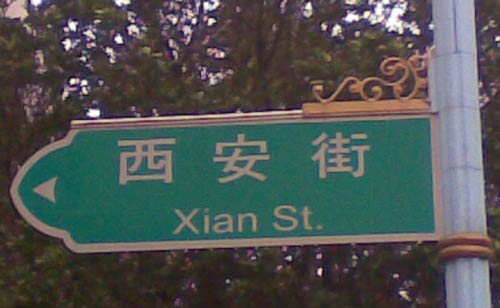Here are some signs in Yilan, which is in northeastern Taiwan.
As the examples below demonstrate, Yilan uses Hanyu Pinyin on its street signs. I saw only one old street sign in Tongyong Pinyin; this was through the window of a bus in motion, so I wasn’t able to get a photo.
It seems that Yilan has problems with apostrophes as well. These should, of course, read Xi’an.

In Taiwan, the vast majority of street names are two syllables long. Here’s a rare three-syllable name. I was told that the name comes from the company that constructed the irrigation channel parallel to the road. The sign — and even the name itself — is so new that it’s not in the current version of Google maps.


Some decorative signage.
I don’t care much for Yilan’s rainy weather; but the city does have style. These signs, for example, are interesting — much more so than a failed attempt at a decorative sign in Tongyong Pinyin in Banqiao.

The highway signs in Yilan, however, are in Tongyong Pinyin. This is a somewhat odd situation, given that highway signs belong to the national government, which is under the control of the KMT, which supports Hanyu Pinyin. Yilan is back in the DPP camp. (The Democratic Progressive Party continues to oppose Hanyu Pinyin and support Tongyong Pinyin.) The switch of streets signs to Hanyu Pinyin was probably done under the previous magistrate, who was a member of the KMT.
I’m including this one despite the poor image quality because I want to note the awful typography (e.g., uneven baselines, capital letters too large).



















